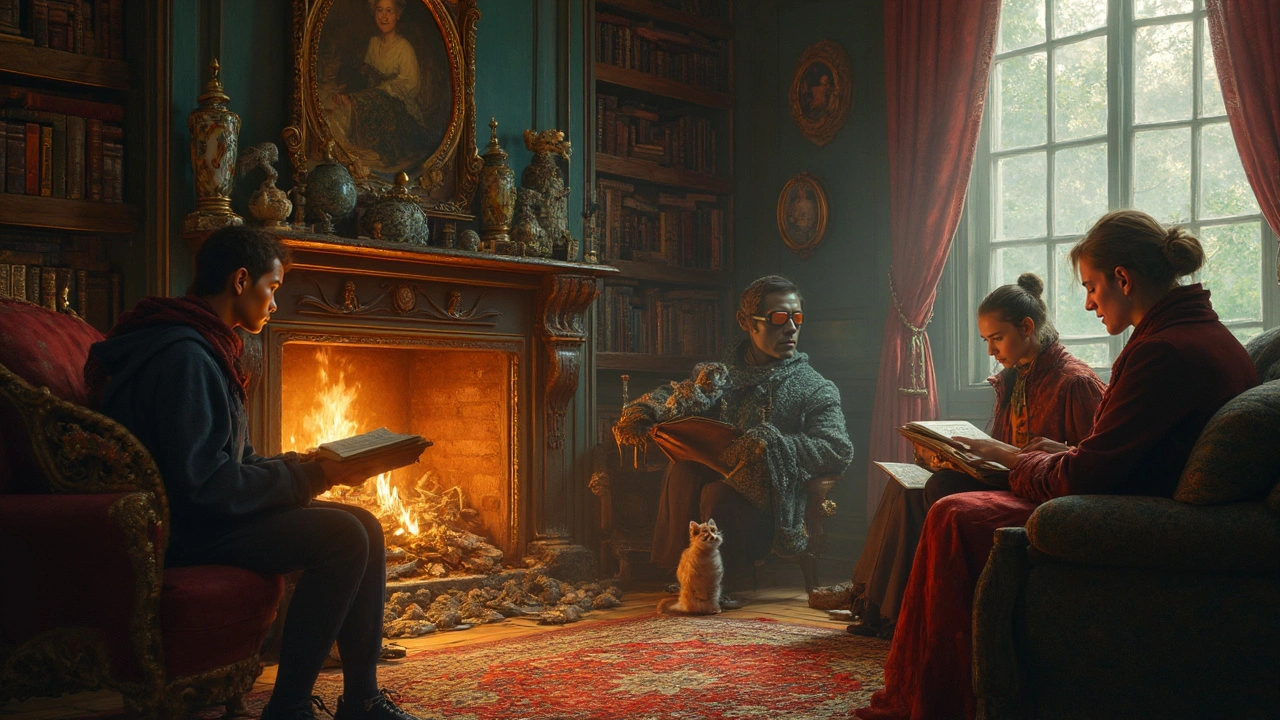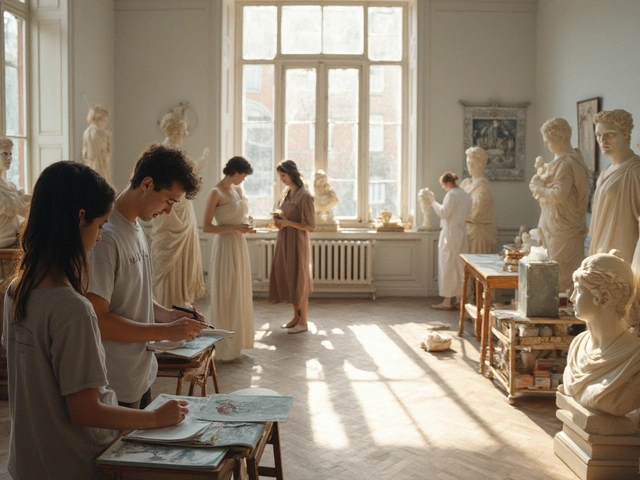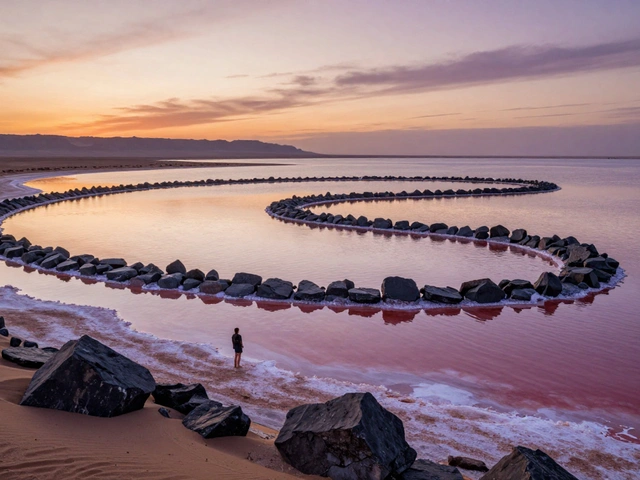Pick up a book where ghosts share a meal with the living or rain lasts for years, and you’ve landed in magical realism territory. The cool thing? These weird moments don’t shock the characters. For them, it’s just another Tuesday. This is what hooks so many readers — magical realism lets the impossible fit right into daily life, not as a problem to solve but as something normal.
If you’re tired of stories where magic forces everyone to go on wild quests or battle dark lords, you might really enjoy this genre. Here, the magic slips in quietly. It’s folded into family dinners, street markets, and small-town gossip. It makes you question your own sense of what’s possible, without asking you to leave the real world behind.
- What Sets Magical Realism Apart
- Why Do We Love It So Much?
- Big Names and Global Stories
- Bringing Magical Realism into Your Reading List
What Sets Magical Realism Apart
So, what really separates magical realism from fantasy or science fiction? In magical realism, the wild stuff—think people turning into animals or a city where time works backwards—happens right alongside regular life. The odd part: the characters don’t treat it as strange. In fantasy, you’ve got other worlds and spells. In magical realism, the magic’s on your street, and nobody bats an eye.
This genre is big on blurring the line between what’s real and what’s just a little off. Colombian author Gabriel García Márquez, for example, wrote “One Hundred Years of Solitude,” where tiny details like yellow butterflies following a man everywhere are just another part of life in the story. For readers, this makes the magical parts even more believable, because everything else is so normal.
Magical realism also often digs into real-world problems—stuff like family history, heartbreak, or political trouble. The genre isn’t trying to escape reality. Instead, it looks straight at it, using magical elements to make regular problems hit harder or feel more personal.
Check out how it stacks up against other genres:
| Genre | Main Trait | Common Setting | Magic Rules? |
|---|---|---|---|
| Magical Realism | Magic feels normal | Real-world places | No explanations needed |
| Fantasy | Magic is central | Made-up worlds | Detailed magic systems |
| Science Fiction | Advanced tech/science | Future/space/alt reality | Based on scientific ideas |
Weirdly enough, some countries view magical realism as almost their trademark style. In Latin America, it’s taught in most schools, with more than 70% of surveyed high school literature teachers including it in the curriculum, according to a recent study published in the Journal of World Literature in 2022.
- Ordinary and strange mix together naturally
- Characters see magic as just part of life
- Stories often deal with real-life issues
- Magic usually isn’t explained—just accepted
So if you spot a story where people barely blink at flying carpets or ghosts, you’re probably holding a piece of magical realism.
Why Do We Love It So Much?
People keep coming back to magical realism because it speaks to something deep inside us. This genre doesn’t just toss magic into the mix for fun—it uses those strange moments to tackle real stuff, like family, identity, culture, and even politics. When stories from Colombia, Japan, or Nigeria slide a miracle into a normal day, it reminds us that the world is full of surprises, even if we miss them sometimes.
Gabriel García Márquez once said he wrote about magical things simply because that’s how life felt in his hometown. And he’s not alone—lots of authors from totally different countries use magical realism to give readers a taste of how their cultures see the world. When Salman Rushdie added talking animals and mysterious windstorms to his books, he was reflecting on the wildness of India’s history and beliefs—and millions connected with that. This mix of the ordinary and the impossible gives readers a new way to see their own lives, making the regular stuff feel full of wonder.
Plus, magical realism doesn’t set the rules too tight, so your imagination can roam. You don’t have to keep track of fancy systems like in hardcore fantasy. Just read, and let the strange bits spark something unexpected in your mind. Readers who sometimes struggle with heavier stories—maybe about war or struggles with identity—say they appreciate how magical realism softens the blow. It holds up a mirror to real pain, but with a little bit of hope or surprise thrown in.
- It lets people from different backgrounds see themselves in books.
- It helps us process big emotions or tough moments in a gentler way.
- It challenges our idea of what’s “real,” making us think twice about how we see our own world.
If you’re curious about just how global this love is, take a look below at some major numbers:
| Region | Top-Selling Magical Realism Titles (2024) | Readers (in millions) |
|---|---|---|
| Latin America | One Hundred Years of Solitude | 12.5 |
| Europe | The Master and Margarita | 8.2 |
| Asia | Kafka on the Shore | 6.8 |
| Africa | Things Fall Apart (with elements) | 4.6 |
Those numbers prove that magical realism really works for people everywhere. It pulls us all in by showing us life with a twist, reminding us there’s always more going on than we see.

Big Names and Global Stories
If you ask anyone, “Who made magical realism famous?” you’ll usually hear the name Gabriel García Márquez. His novel One Hundred Years of Solitude pretty much set the bar. People still read it in high school and college classes all around the world. Márquez mixed everyday life in a Colombian village with women flying into the sky and ghostly premonitions. He once said,
“What matters in life is not what happens to you but what you remember and how you remember it.”That sums up a lot about the vibe you get from the best magical realism books.
But it’s not just a Latin American thing. Plenty of countries put their spin on magical realism. Japanese writer Haruki Murakami throws in talking cats and secret portals in books like Kafka on the Shore and 1Q84. In Africa, Ben Okri’s The Famished Road follows a boy who hangs out with spirits no one else can see. Isabel Allende, also from Latin America, wrote The House of the Spirits using real family history and magical touches. Her work has sold more than 70 million copies in over 40 languages!
Magical realism even pops up in places you wouldn’t expect. Salman Rushdie’s Midnight’s Children takes readers to India, tying national history to magical powers. Laura Esquivel’s Like Water for Chocolate from Mexico weaves food and emotion together so tightly that tears in a cake can make everyone who eats it cry too.
Here’s a quick look at some bestselling magical realism novels and their worldwide reach:
| Book Title | Author | Countries Published In | Estimated Copies Sold |
|---|---|---|---|
| One Hundred Years of Solitude | Gabriel García Márquez | 46+ | 50 million+ |
| The House of the Spirits | Isabel Allende | 37+ | 70 million+ |
| Kafka on the Shore | Haruki Murakami | 40+ | 2 million+ |
| Midnight’s Children | Salman Rushdie | 35+ | 1 million+ |
Every country that dips into magical realism gives it a twist. Latin American writers use it to talk about family and history. African stories might deal with spirits moving through daily life. Asian books sometimes focus on how weird and lonely modern life feels. No matter where it comes from, magical realism makes you look at the world around you—and wonder if there’s a little magic hiding in plain sight.
Bringing Magical Realism into Your Reading List
Ready to jump in and see why magical realism has stuck around for so long? There’s a lot more out there than just Gabriel García Márquez. Today, you'll find magical realism on every continent, and it’s not just old classics either—there are fresh voices making waves right now.
If you want to dig into this genre, start by picking up books that balance everyday life with those "wait, did that just happen?" moments. Here's a quick list of some tried-and-true picks:
- One Hundred Years of Solitude by Gabriel García Márquez – This one basically kicked off the craze. The town of Macondo feels as real as your own, but with floating priests and swarms of yellow butterflies.
- Like Water for Chocolate by Laura Esquivel – Get ready for family drama where food has real magic. A recipe can literally change someone’s fate (or mood).
- Beloved by Toni Morrison – Set after the American Civil War, it slips ghosts and memories into everyday scenes in a way that feels natural—and terrifying.
- The Wind-Up Bird Chronicle by Haruki Murakami – Here, Tokyo is full of mysterious wells, psychic cats, and odd dreams that bleed into real life.
- The House of the Spirits by Isabel Allende – You’ll get family secrets, politics, and people talking to the dead, all rolled together in a tight family saga.
Not sure where to find more? Check out online forums—Reddit’s r/books has lively threads with tons of magical realism recommendations. Local libraries usually have staff picks, too, with little shelf tags pointing you to similar reads.
It helps to match your mood. If you want something light, shoot for books like Mrs. Death Misses Death by Salena Godden, which has humor mixed in. For deeper, darker stories, try Midnight's Children by Salman Rushdie. And if you prefer short stories, look for collections like Her Body and Other Parties by Carmen Maria Machado.
Curious how popular this genre is? Here’s a quick look at how some major magical realism novels have performed in sales:
| Book Title | Copies Sold | Languages Translated |
|---|---|---|
| One Hundred Years of Solitude | Over 50 million | 46 |
| Like Water for Chocolate | Over 7 million | 35 |
| The House of the Spirits | Over 8 million | 37 |
Don’t be shy about mixing new and classic authors. You might even stumble across magical realism in graphic novels or movies—think of “Pan’s Labyrinth” or “Spirited Away.” The trick is to stay open-minded and see magic hiding in plain sight. Once you tune into it, you’ll start noticing stories like these everywhere.




